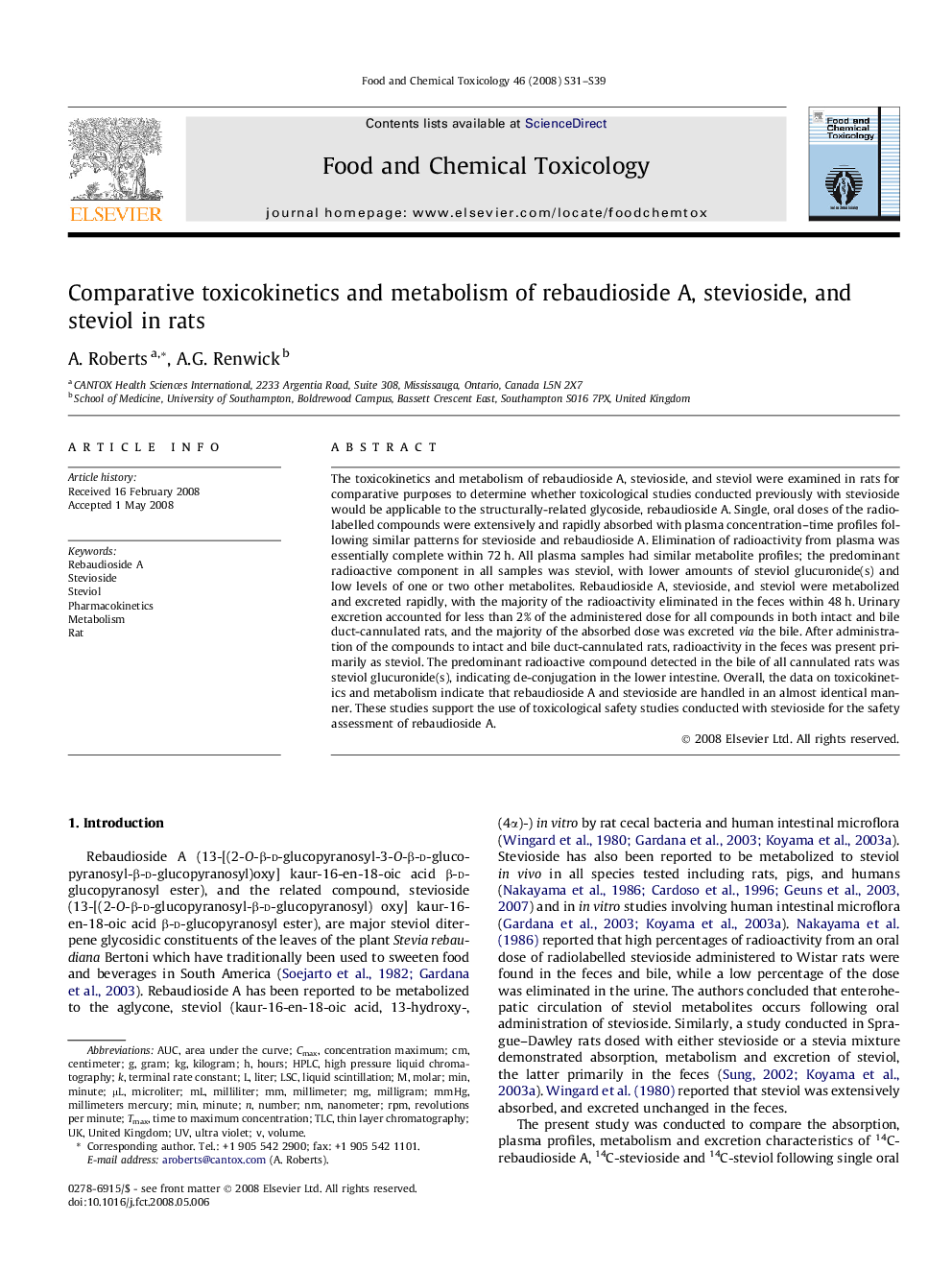| Article ID | Journal | Published Year | Pages | File Type |
|---|---|---|---|---|
| 2587322 | Food and Chemical Toxicology | 2008 | 9 Pages |
The toxicokinetics and metabolism of rebaudioside A, stevioside, and steviol were examined in rats for comparative purposes to determine whether toxicological studies conducted previously with stevioside would be applicable to the structurally-related glycoside, rebaudioside A. Single, oral doses of the radiolabelled compounds were extensively and rapidly absorbed with plasma concentration–time profiles following similar patterns for stevioside and rebaudioside A. Elimination of radioactivity from plasma was essentially complete within 72 h. All plasma samples had similar metabolite profiles; the predominant radioactive component in all samples was steviol, with lower amounts of steviol glucuronide(s) and low levels of one or two other metabolites. Rebaudioside A, stevioside, and steviol were metabolized and excreted rapidly, with the majority of the radioactivity eliminated in the feces within 48 h. Urinary excretion accounted for less than 2% of the administered dose for all compounds in both intact and bile duct-cannulated rats, and the majority of the absorbed dose was excreted via the bile. After administration of the compounds to intact and bile duct-cannulated rats, radioactivity in the feces was present primarily as steviol. The predominant radioactive compound detected in the bile of all cannulated rats was steviol glucuronide(s), indicating de-conjugation in the lower intestine. Overall, the data on toxicokinetics and metabolism indicate that rebaudioside A and stevioside are handled in an almost identical manner. These studies support the use of toxicological safety studies conducted with stevioside for the safety assessment of rebaudioside A.
